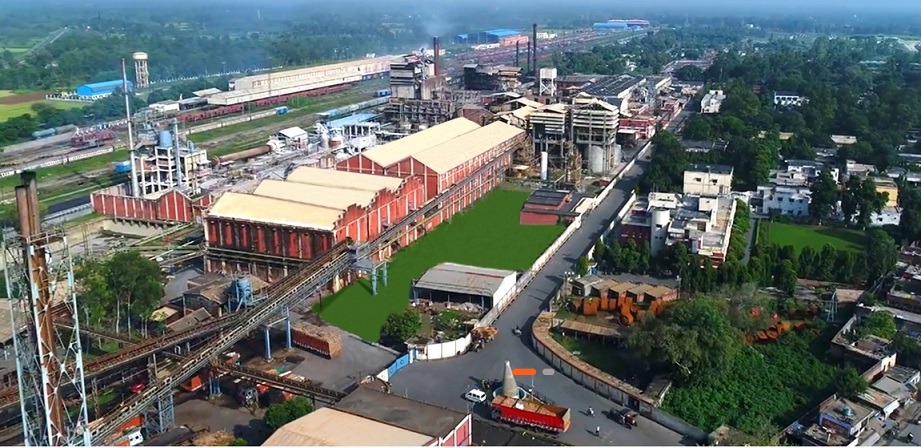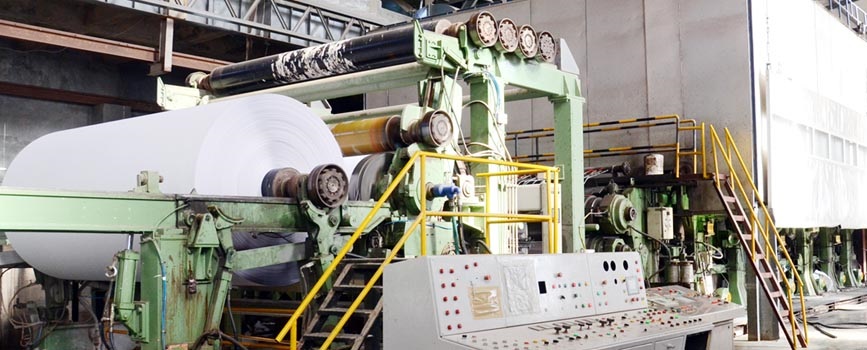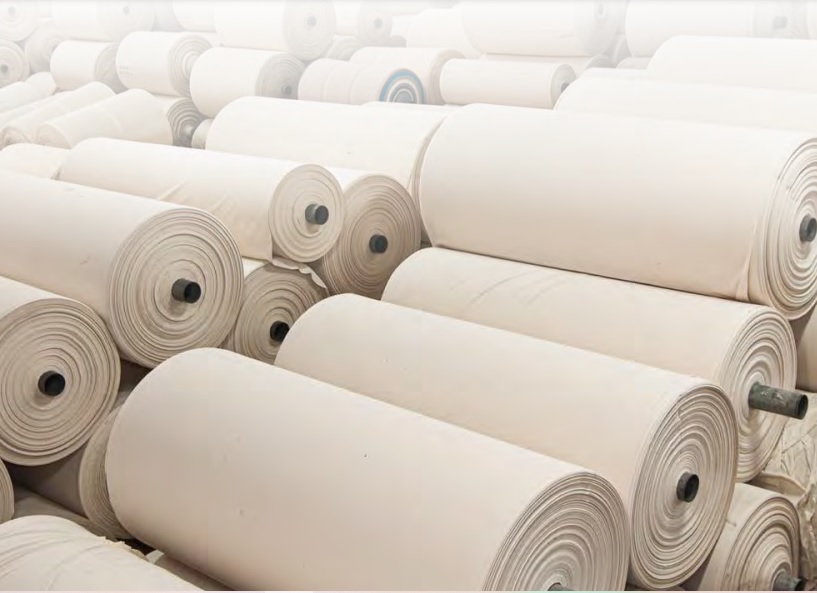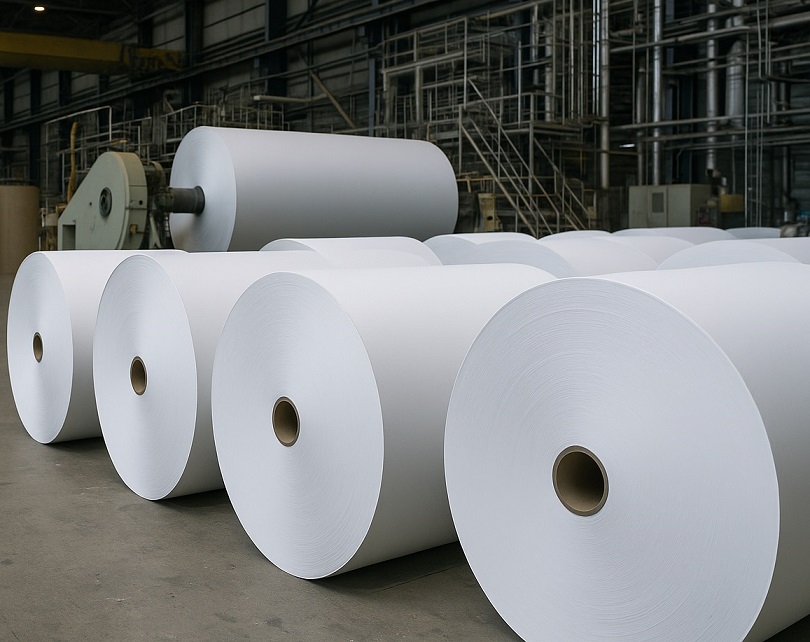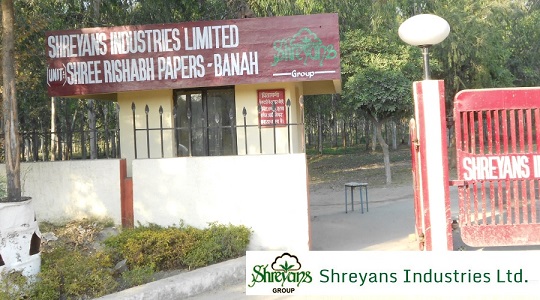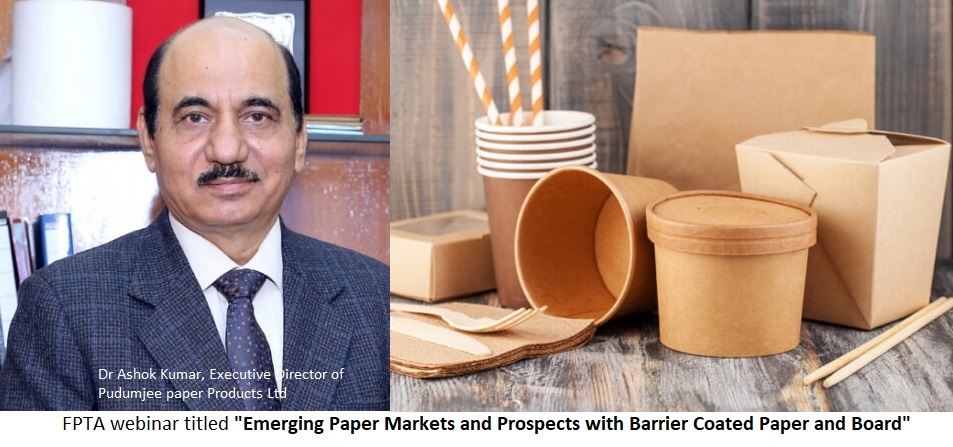TNPL's R&D initiated the use of Senna spectabilis as a raw material and developed 'OPAL,' a new product with a custom shade leaning towards neutral blue
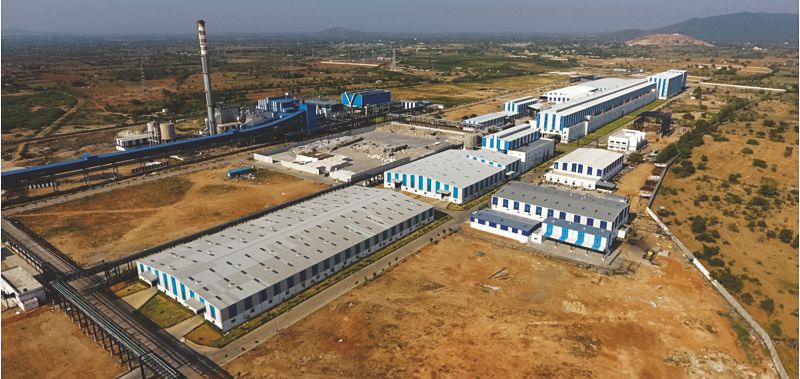
TNPL's R&D initiated the use of Senna spectabilis as a raw material and developed 'OPAL,' a new product with a custom shade leaning towards neutral blue
- Around, 7000 MT of Senna spectabilis wood is consumed at TNPL Unit – I & II.
- Since customer demands are specific made to order sizes and additionally demand forecasting is poor, a lot of inventory accumulation and price corrections happen during the lean periods.
The Pulp and Paper Times | Annual Progress Report for FY 22-23
Tamil Nadu Newsprint and Papers Limited (TNPL) was promoted by the Government of Tamil Nadu in the year 1979 to produce Newsprint and Printing & Writing Paper (PWP) using bagasse as the primary raw material. The plant located at Kagithapuram in Karur District was commissioned during 1984 with an initial capacity of 90,000 tonnes per annum. The company has enhanced the capacity to 4,00,000 tonnes per annum in four phases. The Company has set up a state-of-the-art Packaging Board Plant in the year 2016 with an annual capacity of 2,00,000 MT per annum in Mondipatti village, Manaparai taluk, Tiruchirapalli District and enhanced the total capacity to 6,00,000 tonnes per annum. With this, the Company has emerged as the third largest player in the Indian Paper Industry. The pulping capacity has been increased from 300 tonnes per day (tpd) in 1984 to 1,580 tonnes per day as of date.
The year was good for the Writing & Printing segment of the Paper Industry, with demand continuing to be strong through out the year. However, demand has slowed down for both printing & writing and packaging segment of the Paper Industry in the current year. TNPL could achieve Zero Stocks of paper at Unit- I, for the second consecutive year and carry minimum inventory of Board at Unit- II.
The new pulp mill was commissioned in the 1st quarter of the year giving the much needed relief in terms of self-sufficiency for the hardwood fiber at the Packaging board Unit. This led us to shift to making 100% virgin grade during the year, with focus on the fast – growing high value added cup stock segment, which uses more of our home hardwood pulp.
Educational demand of paper is cyclic which leads to periods of low demand and very high demand. Since customer demands are specific made to order sizes and additionally demand forecasting is poor, a lot of inventory accumulation and price corrections happen during the lean periods. Considering this typical nature of the market, your company has started to increase its focus towards industrial uses of paper which will ensure that there is a more uniform offtake of paper during the entire year. The Company has developed certain grades of industrial papers like sublimation papers, Cup Stocks and papers for offline coating applications to ensure greater regularity of demand. Increased focus is being put to ensure higher penetration in these segments.
Efforts are also on to improve the sales realisations of different varieties of paper made by TNPL by optimizing the product and locational mix. Regular evaluation of the distribution network and appointment of new distributors is being done. Increased focus is being laid on greater financial discipline and control measures as well as timely collection of receivables.
To cater the needs of the market, TNPL R&D team developed the “OPAL” a new product with custom shade towards neutral blue which given good visual appeal and print appeal from the existing grades and Radiant Natural Lottery printing (RNL)” with reduced pollution footprint by avoiding coloring agent and optical brightener.
TNPL’s R&D initiated studies to explore the possibility of using some of the invasive species which is competing with native ecosystem. One of the species is ‘Senna spectabilis’ received from M/s Tamil Nadu Forest Department, Mudhumalai Tiger Reserve Forest for finding suitability of pulping studies. Based on analytical results R&D recommended to use Senna spectabilis as a raw material to be mixed with regular pulpwood species like Eucalyptus and Casuarina in the pulp mill. Around, 7000 MT of Senna spectabilis wood is consumed at TNPL Unit – I & II.
In addition, various new pulp wood clones have been evaluated to find the suitability for pulp yield and pulp strength properties. Total 25 clones were evaluated during the year 2022-23. Among 25 clones, 13 Eucalyptus Hybrid clones, 9 Casuarina Hybrid clones, 2 Acacia hybrid clone and 1 clone of Melia dubia. Based on the results, the clones are recommended for pulp production at both Unit - I & II to have better and improved quality.
Sustainable Plantation Management:
The Company's sustainable plantation management system offers a holistic approach to ensure that plantation activities will have social, environmental and economic benefits. Plantation management guided by sustainable approach is at the heart of the Company's business and its operations. By this sustainable management system, the Company not only sources the pulpwood but also conserves value forests and supports local economic development, while planting crores of pulpwood clonal plants to harvest the pulpwood on sustained basis.
During 2022-23, the Company established high- yielding clonal pulpwood plantations in an extent of 22,495 acres involving 5359 farmers through "Potential Village combined Cluster Approach". Out of this, the short rotation high yielding Casuarina clonal plantations cover 13,396 acres and 9,099 acres under Eucalyptus clonal plantations. It is evident that the Company's cluster approach has resulted in achieving more than 90% of its plantations mainly in eight districts i.e., Ariyalur, Pudukkottai, Sivagangai, Cuddalore, Viluppuram, Chengalpattu, Karur and Trichy which help in effective monitoring of plantation with optimum use of resources. In this successful pathway of plantation establishment, the Company registered a cumulative pulpwood plantation in an extent of 2,33,774 acres with active participation of 45738 farmers from 2004 to 2023.
Mill Expansion Plan of TNPL Unit II – Phase One
In continuation to the trial production commenced at the modern Pulp mill along with Chemical Recovery Island at Unit-II, the pulp production was further optimized and the production was ramped up to the rated capacity. The balance of plants like Chips Processing system, Chemical preparation systems including Chlorine Di-Oxide plant, augmentation of existing Water treatment and Effluent treatment plants were also commissioned, optimized with the pulp mill production rate. The projects implemented under Mill Expansion Plan (MEP) of TNPL Unit II – Phase 1, features latest technology in all the areas with emphasis on least environmental impact and high energy efficiency. A continuous digester is delivering consistent pulp quality with low specific consumption of water, steam and power. The Chemical Recovery Boiler is highly energy efficient and the Evaporator plant has high steam economy. The latest generation Integrated Chlorine dioxide plant with nil effluent is in operation. A system for collection and incineration of Non-condensable gases, is in operation, to make the mill odour free. These new technologies will further strengthen the company’s ambition to maintain the leading position and will enable TNPL to implement second phase of the MEP, for capacity enhancement of Unit II.
PERFORMANCE HIGHLIGHTS OF THE YEAR
a. Operations
1. The Company’s Revenue from Operations for the year 2022-23 is Rs. 5179.89 crore.
2. Profit before tax is Rs. 602.76 crore and Profit after tax is Rs. 387.87 crore.
3. During the year, the Paper production was 420793 MT.
4. Paper sales during the year was 420793 MT, Domestic Sales accounts for 83% and Exports at 17%.
5. During the year, the Packaging Board plant production was 167035 MT.
6. The Packaging Board sales during the year 2022-23 was 167357 MT. Domestic Sales accounts for 96% and exports at 4%.
7. 312555 MT of Hardwood Pulp (HWP), Chemical Bagasse Pulp (CBP) and Deinked Pulp (DIP) were produced during the year in Unit I. 108435 MT of Hardwood Pulp (HWP) was produced during the year in Unit II. The total pulp produced during the year was 420990 MT. 8. 7454.03 lak
The Above views are taken from TNPL’s annul report for FY 22-23
Web Title: TNPL's R&D initiated the use of Senna spectabilis as a raw material and developed 'OPAL,' a new product with a custom shade leaning towards neutral blue




 Join WhatsApp Group
Join WhatsApp Group Join Telegram Channel
Join Telegram Channel Join YouTube Channel
Join YouTube Channel Join Job Channel (View | Submit Jobs)
Join Job Channel (View | Submit Jobs) Join Buy Sell Channel (Free to Submit)
Join Buy Sell Channel (Free to Submit) Paper News Headlines Channel (Free to read)
Paper News Headlines Channel (Free to read)




